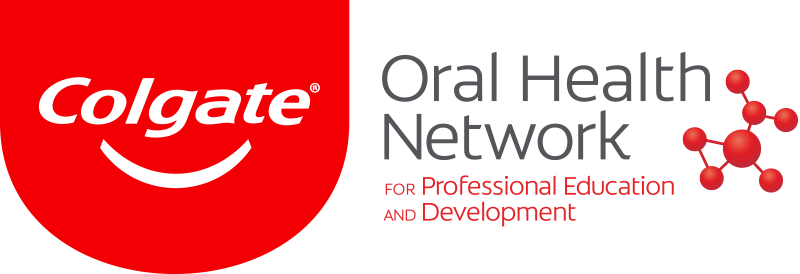Planmeca is known for high-tech innovations and continuous product development. The company’s powerful Planmeca Romexis software platform allows all stages of the dental implant and aesthetic prosthodontic treatment to be completed using one piece of software, from the computer-assisted design of patients’ smiles to the fabrication of surgical guides.
The following clinical case, which I performed together with my colleagues Dr Ponomarev, Dr Kozhevin and Dr Yarokhin, illustrates how digital solutions can be used in prosthodontic treatment, implant placement and restoration design. According to our experiences, digital CAD/CAM technologies enable maximal functional and aesthetic results compared to traditional methods.
Clinical case report
The clinical case illustrates the advantages of using Planmeca CAD/CAM solutions in the digital planning of an implant placement and surgical guide, as well as in the fabrication of a ceramic restoration. This article presents a clinical case in which the treatment was completed using the Planmeca Romexis 3D Implant Guide software, Planmeca PlanCAD Premium software and Planmeca PlanMill 40 milling unit.
The clinical case features a female patient, who complained about missing tooth #22, as well as the shield-like shape of tooth #12 (Figs. 1 & 2). During the initial examination, the area around the missing tooth was estimated to be quite narrow for an implant. However, the patient declined orthodontic preparation, as she had already previously had orthodontic treatment with orthodontic surgery.
Fig. 1: The patient’s upper teeth before treatment.
Fig. 2: The patient’s upper teeth before treatment.
Fig. 3: Digital implant and surgical guide planning in Planmeca Romexis software.
Fig. 4: Digital implant and surgical guide planning in Planmeca Romexis software.
Fig. 5: Surgical guide was fabricated for maximum precision.
Fig. 6: Successful placement of the implant.
Fig. 7: Successful placement of the implant.
Fig. 8: Temporary crown was installed to support the formation of soft tissues.
Fig. 9: Temporary crown was installed to support the formation of soft tissues.
Fig. 10: Temporary crown was installed to support the formation of soft tissues.
Fig. 11: Crown lengthening was performed on tooth #12.
Fig. 12: Crown lengthening was performed on tooth #12.
Fig. 13: Crown lengthening was performed on tooth #12.
Fig. 14: The final restorations were designed in Planmeca PlanCAD Premium.
Fig. 15: The final restorations were designed in Planmeca PlanCAD Premium.
Fig. 16: The final restorations were designed in Planmeca PlanCAD Premium.
Fig. 17: The final restorations were designed in Planmeca PlanCAD Premium.
Fig. 18: The final restorations were designed in Planmeca PlanCAD Premium.
Fig. 19: The final restorations were designed in Planmeca PlanCAD Premium.
Fig. 20: Final restorations: Zirconium abutment screw with a ceramic facing and a fully anatomical Empress crown.
Fig. 21: Final restorations: Zirconium abutment screw with a ceramic facing and a fully anatomical Empress crown.
Fig. 22: Final outcome after the completion of the treatment.
Fig. 23: Final outcome after the completion of the treatment.
Fig. 24: Final outcome after the completion of the treatment.
In this particular case, we started with an aesthetic analysis of the patient’s CBCT data and concluded that a Straumann implant with a 2.9 mm diameter would fit in the area of tooth 22, if we used a surgical guide for maximum precision (Figs. 3–5). For tooth #12, we decided to fabricate a thin-walled IPS e.max ceramic restoration (Ivoclar Vivadent).
Thanks to digital planning and a carefully fabricated surgical guide, the implant was placed successfully, even though the anatomical conditions appeared to be less than advantageous. We achieved a torque of 30 Ncm and attached a healing abutment to the implant (Figs. 6 & 7).
Three months after the implant placement operation, the osseointegration of the implant fixture was completed. A temporary crown was fabricated on the implant from a VITA ENAMIC multiColor block to support the formation of soft tissues (Figs. 8–10). We improved the original design on the Straumann superstructure with gum contouring. On tooth #12, crown lengthening was performed with an electrocoagulator (Figs. 11–13).
Once the formation of the soft tissues was complete, tooth #12 was minimally prepared for the ceramic crown with the help of a surgical microscope. After the preparation, the teeth were scanned in order to digitally design a custom abutment and crowns (Figs. 14–19).
The final smile design was planned digitally together with the patient. For the implant structure, we chose an individual zirconium abutment screw with a ceramic facing and a fully anatomical Empress crown (Figs. 20 & 21).
The ceramic facing concealed the excessive brightness of the zirconium, and we were able to achieve the desired colour. Thanks to the digital workflow, we managed to fulfil the wishes of the patient. (Figs. 22–24).
Conclusion
With digital technologies, the entire implant workflow can be completed in the dental clinic, from planning to fabrication of the restorations. Digital planning increases the reliability of the implant treatment and helps the dentist to succeed in the operation. Digital tools allow achieving the maximum functional and aesthetic result even in combined operations in which an implant placement and ceramic restoration are performed simultaneously.
Thanks to the development of modern technologies, a 3D model of a patient’s set of teeth can now be acquired in only a few minutes, without infringing on the comfort of the patient. At the same time, combining a CBCT image with an intraoral scan enables the dentist to plan the implant placement and surgical guide accurately and with just a few mouse clicks.
Finally, digital technologies also enable visualising the treatment outcome for the patient. Clear visualisations of the end result facilitate communication with the patient, which, in turn, can increase case acceptance.
Editorial note: A list of references is available from the publisher. This article was published in CAD/CAM - international magazine of digital dentistry No. 01/2019.
COLOGNE, Germany: Since its establishment in 2004, Ray has been dedicated to creating a better world by providing reliable and innovative radiographic ...
Whether we like it or not, we are embracing the digital era in our brave new world. Many dental practices are now becoming paper-free—a digital ...
The German company Schütz Dental promotes innovative dentistry and dental technology with its products made in Germany for a complete digital workflow in ...
MISGAV, Israel: Digital workflows connect the dots in modern dentistry by merging several connected procedures into one complete treatment. The harnessing ...
A 62-year-old male patient was referred to my practice for implant planning and treatment in the maxillary anterior region. The teeth in the maxillary ...
A webinar of Align Education’s Digital Excellence Series on exceptional outcomes with a seamless ortho-restorative approach brought together Dr Karla ...
DUBAI, UAE: At AEEDC Dubai 2024, Osstem Implant, a major competitor in the global dental industry, is offering attendees an opportunity to explore its range...
Complete edentulism is an irreversible condition that is a known marker of disease burden for oral health.1 Edentulism significantly influences both oral ...
Dentists today are living during exciting times when advancements in materials, techniques and diagnostics allow us to predictably improve the quality of ...
Achieving a successful outcome in aesthetic dentistry can be a formidable challenge for all dental practitioners, regardless of their experience level. The ...
Live webinar
Tue. 6 August 2024
6:00 pm EST (New York)
Live webinar
Tue. 6 August 2024
8:00 pm EST (New York)
Dr. Cameron Shahbazian DMD MBA
Live webinar
Tue. 13 August 2024
7:00 pm EST (New York)
Live webinar
Wed. 14 August 2024
12:30 pm EST (New York)
Live webinar
Wed. 21 August 2024
9:00 am EST (New York)
Dr. Jim Lai DMD, MSc(Perio), EdD, FRCD(C)
Live webinar
Thu. 22 August 2024
4:00 pm EST (New York)
Live webinar
Wed. 28 August 2024
8:00 pm EST (New York)



 Austria / Österreich
Austria / Österreich
 Bosnia and Herzegovina / Босна и Херцеговина
Bosnia and Herzegovina / Босна и Херцеговина
 Bulgaria / България
Bulgaria / България
 Croatia / Hrvatska
Croatia / Hrvatska
 Czech Republic & Slovakia / Česká republika & Slovensko
Czech Republic & Slovakia / Česká republika & Slovensko
 France / France
France / France
 Germany / Deutschland
Germany / Deutschland
 Greece / ΕΛΛΑΔΑ
Greece / ΕΛΛΑΔΑ
 Italy / Italia
Italy / Italia
 Netherlands / Nederland
Netherlands / Nederland
 Nordic / Nordic
Nordic / Nordic
 Poland / Polska
Poland / Polska
 Portugal / Portugal
Portugal / Portugal
 Romania & Moldova / România & Moldova
Romania & Moldova / România & Moldova
 Slovenia / Slovenija
Slovenia / Slovenija
 Serbia & Montenegro / Србија и Црна Гора
Serbia & Montenegro / Србија и Црна Гора
 Spain / España
Spain / España
 Switzerland / Schweiz
Switzerland / Schweiz
 Turkey / Türkiye
Turkey / Türkiye
 UK & Ireland / UK & Ireland
UK & Ireland / UK & Ireland
 Brazil / Brasil
Brazil / Brasil
 Canada / Canada
Canada / Canada
 Latin America / Latinoamérica
Latin America / Latinoamérica
 USA / USA
USA / USA
 China / 中国
China / 中国
 India / भारत गणराज्य
India / भारत गणराज्य
 Japan / 日本
Japan / 日本
 Pakistan / Pākistān
Pakistan / Pākistān
 Vietnam / Việt Nam
Vietnam / Việt Nam
 ASEAN / ASEAN
ASEAN / ASEAN
 Israel / מְדִינַת יִשְׂרָאֵל
Israel / מְדִינַת יִשְׂרָאֵל
 Algeria, Morocco & Tunisia / الجزائر والمغرب وتونس
Algeria, Morocco & Tunisia / الجزائر والمغرب وتونس
 Middle East / Middle East
Middle East / Middle East
:sharpen(level=0):output(format=jpeg)/up/dt/2024/07/Study-evaluates-primary-personality-types-among-dental-students.jpg)
:sharpen(level=0):output(format=jpeg)/up/dt/2024/07/Shutterstock_2330040761.jpg)
:sharpen(level=0):output(format=jpeg)/up/dt/2024/07/file-7.jpg)
:sharpen(level=0):output(format=jpeg)/up/dt/2024/07/Our-commitment-to-digital-dentistry-is-a-cornerstone-of-our-strategy.jpg)
:sharpen(level=0):output(format=jpeg)/up/dt/2024/07/Shutterstock_1051488260.jpg)








:sharpen(level=0):output(format=png)/up/dt/2023/08/Neoss_Logo_new.png)
:sharpen(level=0):output(format=png)/up/dt/2022/01/HASSBIO_Logo_horizontal.png)
:sharpen(level=0):output(format=png)/up/dt/2014/02/FKG.png)
:sharpen(level=0):output(format=png)/up/dt/2019/04/logo.png)
:sharpen(level=0):output(format=png)/up/dt/2013/04/Dentsply-Sirona.png)
:sharpen(level=0):output(format=png)/up/dt/2014/02/3shape.png)
:sharpen(level=0):output(format=jpeg)/up/dt/2019/05/The-complete-digital-implant.jpg)

:sharpen(level=0):output(format=jpeg)/up/dt/2024/07/Study-evaluates-primary-personality-types-among-dental-students.jpg)
:sharpen(level=0):output(format=gif)/wp-content/themes/dt/images/no-user.gif)
:sharpen(level=0):output(format=jpeg)/up/dt/2019/05/1.jpg)
:sharpen(level=0):output(format=jpeg)/up/dt/2019/05/2.jpg)
:sharpen(level=0):output(format=jpeg)/up/dt/2019/05/3.jpg)
:sharpen(level=0):output(format=jpeg)/up/dt/2019/05/4.jpg)
:sharpen(level=0):output(format=jpeg)/up/dt/2019/05/5.jpg)
:sharpen(level=0):output(format=jpeg)/up/dt/2019/05/6.jpg)
:sharpen(level=0):output(format=jpeg)/up/dt/2019/05/7.jpg)
:sharpen(level=0):output(format=jpeg)/up/dt/2019/05/8.jpg)
:sharpen(level=0):output(format=jpeg)/up/dt/2019/05/9.jpg)
:sharpen(level=0):output(format=jpeg)/up/dt/2019/05/10.jpg)
:sharpen(level=0):output(format=jpeg)/up/dt/2019/05/11.jpg)
:sharpen(level=0):output(format=jpeg)/up/dt/2019/05/12.jpg)
:sharpen(level=0):output(format=jpeg)/up/dt/2019/05/13.jpg)
:sharpen(level=0):output(format=jpeg)/up/dt/2019/05/14.jpg)
:sharpen(level=0):output(format=jpeg)/up/dt/2019/05/15.jpg)
:sharpen(level=0):output(format=jpeg)/up/dt/2019/05/16.jpg)
:sharpen(level=0):output(format=jpeg)/up/dt/2019/05/17.jpg)
:sharpen(level=0):output(format=jpeg)/up/dt/2019/05/18.jpg)
:sharpen(level=0):output(format=jpeg)/up/dt/2019/05/19.jpg)
:sharpen(level=0):output(format=jpeg)/up/dt/2019/05/20.jpg)
:sharpen(level=0):output(format=jpeg)/up/dt/2019/05/21.jpg)
:sharpen(level=0):output(format=jpeg)/up/dt/2019/05/22.jpg)
:sharpen(level=0):output(format=jpeg)/up/dt/2019/05/23.jpg)
:sharpen(level=0):output(format=jpeg)/up/dt/2019/05/24.jpg)
:sharpen(level=0):output(format=jpeg)/up/dt/2021/09/Ray_ArticlePic_780x439_today-%40-IDS_22-09-2021.jpg)
:sharpen(level=0):output(format=jpeg)/up/dt/2018/01/fig-11-scan-bodies-in-situonline.jpg)
:sharpen(level=0):output(format=jpeg)/up/dt/2021/09/Sch%C3%BCtz-Dental_Stock-und-Pavlic_1188-x-668.jpg)
:sharpen(level=0):output(format=jpeg)/up/dt/2024/06/DT-1920X10801.jpg)
:sharpen(level=0):output(format=jpeg)/up/dt/2024/04/A-fully-guided-digital-workflow-for-predictable-implant-planning-and-placement-Fig.-1a.jpg)
:sharpen(level=0):output(format=jpeg)/up/dt/2024/01/Align-Technologys-Digital-Excellence-Series%E2%80%94The-digital-workflow-really-empowers-us-to-see-the-end-before-we-begin.jpg)
:sharpen(level=0):output(format=jpeg)/up/dt/2024/02/AEEDC-2024_OSSTEM-IMPLANT-4.jpg)
:sharpen(level=0):output(format=jpeg)/up/dt/2024/03/li-00001.jpg)
:sharpen(level=0):output(format=jpeg)/up/dt/2024/01/Predictable-aesthetic-success-with-a-digital-workflow_header.jpg)
:sharpen(level=0):output(format=jpeg)/up/dt/2023/02/Integrating-digital-smile-design-into.jpg)






:sharpen(level=0):output(format=jpeg)/up/dt/2024/07/Study-evaluates-primary-personality-types-among-dental-students.jpg)
:sharpen(level=0):output(format=jpeg)/up/dt/2024/07/Shutterstock_2330040761.jpg)
:sharpen(level=0):output(format=jpeg)/up/dt/2024/07/file-7.jpg)
:sharpen(level=0):output(format=jpeg)/wp-content/themes/dt/images/3dprinting-banner.jpg)
:sharpen(level=0):output(format=jpeg)/wp-content/themes/dt/images/aligners-banner.jpg)
:sharpen(level=0):output(format=jpeg)/wp-content/themes/dt/images/covid-banner.jpg)
:sharpen(level=0):output(format=jpeg)/wp-content/themes/dt/images/roots-banner-2024.jpg)
To post a reply please login or register